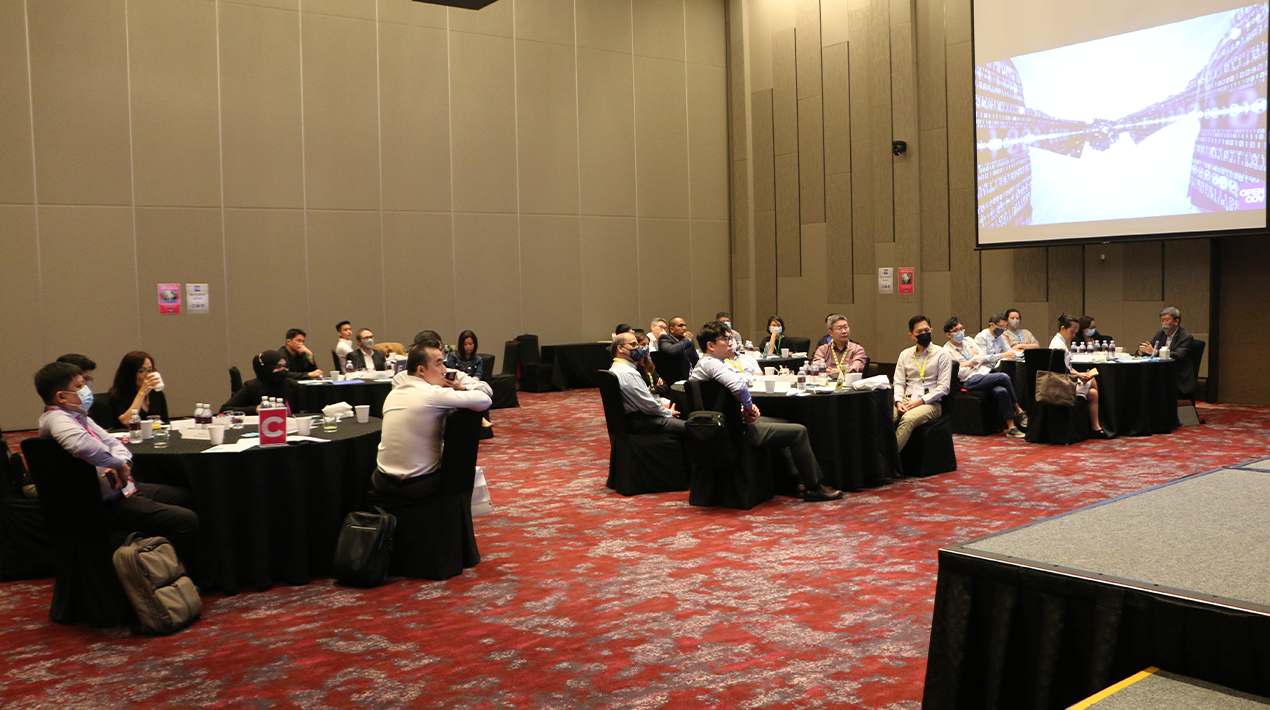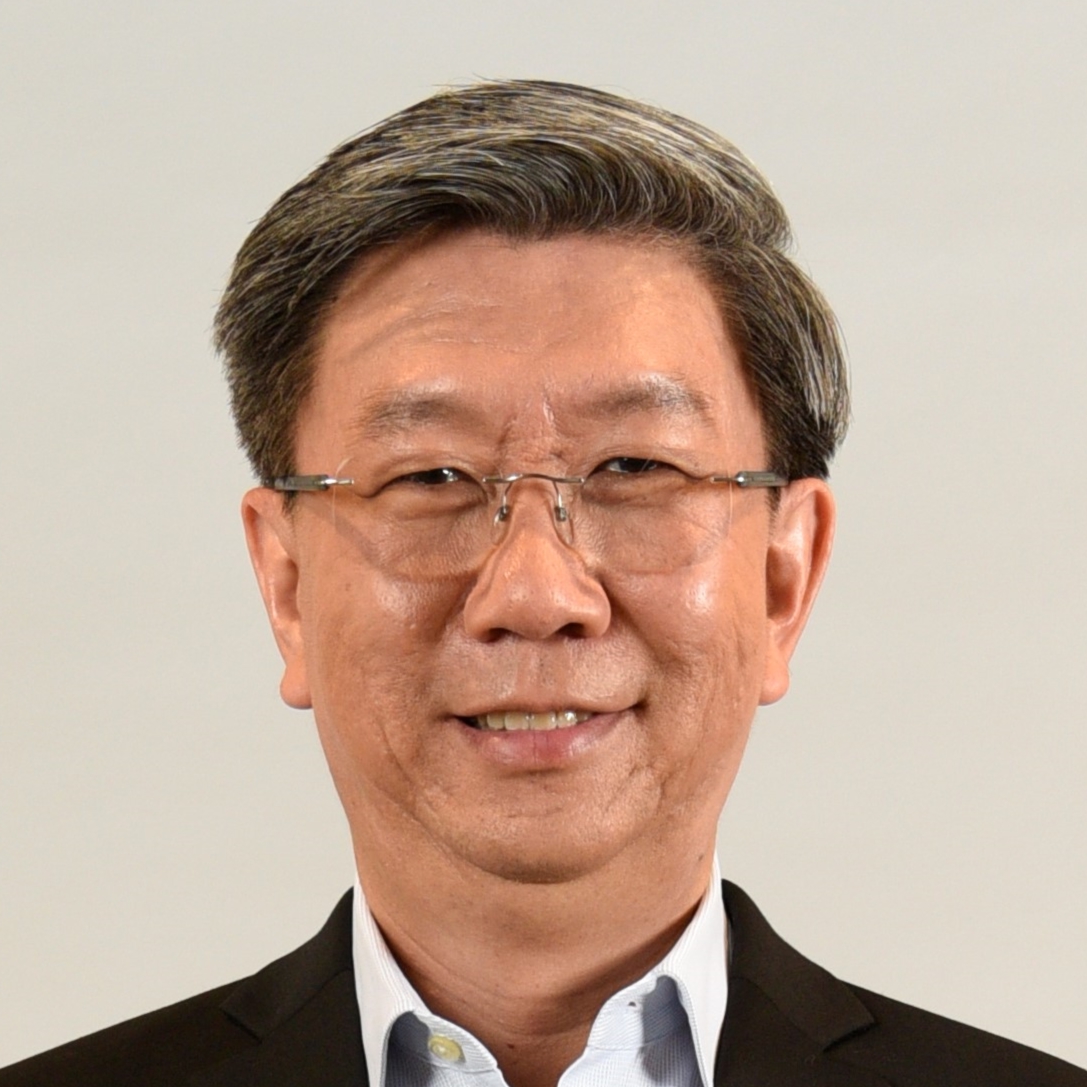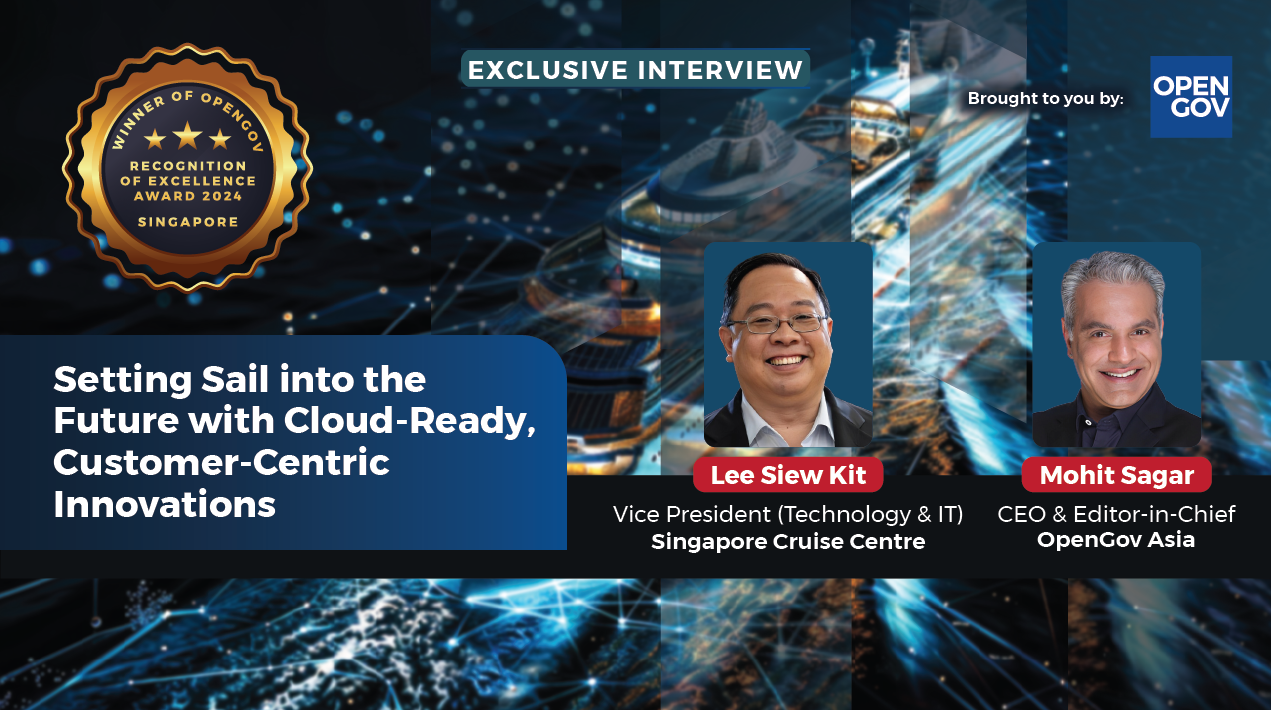
The development, integration and implementation of information management are critical in an era when data quality is more important than ever. As attempts are made to create and manage data-driven agencies to achieve goals, public sector leaders must accelerate the current framework to connect dependencies across processes for reliable information.
The public sector is also working hard to gain access to information, which it sees as a valuable asset. To better support important decision-making and meet the demands of demanding citizens, it is necessary to quickly secure and analyse both structured and unstructured data. Obtaining trustworthy data while adhering to data governance and compliance will improve data quality, accuracy and accessibility.
The idea that the public sector should focus more on preventing crises rather than just responding to them is not new. What is new is the ability to successfully predict and mitigate critical events on a regular and consistent basis.
Recent advancements in data analytics, business intelligence, machine learning and artificial intelligence have allowed the public sector to better detect and forecast operational issues. This exponential improvement in the ability to track patterns and identify potential problems in massive historical data sets and millions of pages of unstructured text is revolutionary. Departments can instantly understand where to increase efficiencies, when to manage costs and how to satisfy citizens with the right services by creating business intelligence dashboards.
Further, data analytics develops a single source of truth for compliance and methods to build trust among citizens.
Data governance is the most successful technique for formalising accountability where employees define, produce, and use data to execute their job functions efficiently. Good data is needed to improve productivity and citizen experience – and organisations adopting technology that enables employees to gather instant data will more quickly accelerate their mandates than those that do not.
The rate at which data is generated is increasing all the time. In light of this, it is vital that people prepare themselves to function and engage with data in the larger environment and are empowered to do so. Hyperintelligence, a term that has only lately been coined, makes data accessible to employees at their convenience.
The public sector must have greater proclivity in times of uncertainty to explore and exploit new technology opportunities that have the potential to mitigate risk and ensure business continuity. Decision-making must be based on actionable insights and intelligence garnered from the vast amounts of data the government has access to.
Thus, the necessity to improve usable data analysis while becoming increasingly data-driven in decision-making is almost unanimously acknowledged. And this cannot be done without reliable analytics tools capable of desegregating and connecting previously siloed data, making it manageable from a single place.
The OpenGov Breakfast Insight held on 27 April 2022 at Sheraton Towers Singapore aimed to provide the latest information on how the public sector can use data analytics to drive mission outcomes.
Meeting demands of citizens and upholding data governance

To kickstart the session, Mohit Sagar, Group Managing Director and Editor-in-Chief at OpenGov Asia delivered the opening address.
Data on a global scale has taken on an entirely different dimension and Singapore is no different. In fact, compared to other countries in the region, the nation is well ahead of the curve and leads in data analytics. The public sector has spent a huge amount of money on technological innovations.
“Data can enable governments to make informed decisions,” Mohit asserts.
While Singapore collects massive amounts of data, quantity alone is not enough to make informed decisions. Where, how, and when is critical as is how the data is structured and made uniform. For better and more relevant data, information silos need to be broken down. Democratisation, integration and sharing will all be key.
To democratise data, the public sector needs to empower its entire workforce – from top to bottom. For the most part, data is often only accessible to people in higher positions or specific departments, creating disparity and lacunae. The information gap must be bridged with appropriate empowerment – be it through awareness, training, or skill up-gradation.
Access to large data sets is essential for a government’s digital transformation journey. Of course, data in and of itself is not the end goal – data must serve as a tool to derive understanding that enables effective decision making. Actionable insights from analytics will ultimately enrich the citizen experience.
In closing, Mohit emphasised the importance of partnerships that could help leverage data analytics for an organisation. “Use technology and minimise customisation,” Mohit emphasises. “By working with the right people, a company can accelerate its digital journey towards effective digital transformation.”
Deepening insights through data analytics

Kyung-Whu Chung, Director, Sales Engineering, APAC at MicroStrategy spoke next on the criticality of quality of data in digital transformation. To set the context, Kyung-Whu revealed that a recent survey showed that 94% of respondents say that Data and Analytics are important to their business growth and digital transformation.
There are huge benefits for organisations to using data analytics, including improved efficiency and productivity. Better data analytics leads to faster and more effective decision-making and results in better financial performance. Data analytics also assist organisations to identify and create new promising products and services.
While benefits are clear internally, there are advantages for the consumer as well. Customer satisfaction and experience are both critical for a company to thrive was the key. Data analytics help better understand consumer behaviour, trends, demands and identify issues. It has improved customer acquisition and retention with enhanced customer experience.
However, 70% of the people are not using any analytics tool. The vast majority (97%) of real-time decisions are data deprived. This indicates, surprisingly, that organisations and agencies are still relying on their intuition and manual analysis to solve complex problems with multiple variables.
Barriers that limit the uptake of analytics have been well articulated. Kyung-Whu identified the top three concerns – data and privacy concerns, limited access to analytics and lack of talent and training.
On the issue of privacy, 38% of organisations said more than 50% of their data is certified by an organisation authority or adheres to corporate policies. Despite this, customers are concerned about their sensitive and personal data. Organisations need to build trust and communicate properly on the use of data responsibly. This will encourage customers to be more inclined to provide their information.
When it comes to access, data-driven culture often gets stuck at the top. Access to the organisation’s data and analytics is usually concentrated on specific roles. Democratising data is important as it empowers all departments and encourages data-driven decisions at all levels throughout the company.
The last challenge that organisations need to tackle is the lack of talent and training. While simple enough to understand, there needs to be a more intentional drive and strategy to reskill and upskill employees.

In closing, Kyung-Whu encouraged delegates to expand their thinking and embrace a multi-tool environment. A data-driven culture can only be built on data democratisation, enabling everyone to access every process and every app. Collecting data is only a start, organisations need to enrich the data to gain deeper insights.
The future of citizen experience

Lim Chinn Hwa, Senior Director, Smart Nation Platform Solutions, GovTech elaborated on GovTech’s experience in building a Smart Nation.
Quoting PM Lee, Chinn Hwa shared three ways to understand Singapore’s vision for a Smart Nation: “We see it in our daily living, where networks of sensors and smart devices enable us to live sustainably and comfortably; We should see it in our communities, where technology will enable more people to connect to one another more easily and intensely; We should see it in our future, where we can create possibilities for ourselves beyond what we imagined possible.
A smart nation is about data and what we do about the data, Chinn Hwa asserts. It involves the systematic use of technology that is integrated into a coherent whole, networks of connected smart devices and sensors, and a community connected by technology. It also requires government-built infrastructure and framework, secure and trusted systems, and a culture of experimentation
Accordingly, the key to a smart nation are as follows:
- Sense: Collect data from our physical environment
- Contextualise: Process data for actionable insights
- Act: Act on insights from contextualised data
Chinn Hwa shared that with the Smart Nation Sensor Platform (SNSP) the government is able to develop a 360° view of Singapore with:
- Data collected from land, air and sea sensor platforms
- Interoperability and integration with different Smart Districts across Singapore
SNSP helps to achieve 360° awareness with sensor data that comes from static sensor platforms, mobile sensor platforms and data exchange platforms.
With the SNSP in place, Chinn Hwa emphasises the possibility of data-driven capability in decision making. He adds that GovTech takes the approach of looking at partnerships with agencies but also with industries.
GovTech is the centre of excellence for smart systems and processes but they work with agencies to understand what architecture is optimal for cyber-physical data collection. From the sensor lake, an API is created to extract knowledge out of the data.
SNSP brings meaningful Impact to agencies and citizens because of its secured and scalable Sensor & IoT (Internet of Things) network infrastructure based on GCC. It is a reliable, connected, and interoperable sensor data platform where agencies can Plug ‘n’ Play their sensor assets.
The other benefits include:
- Plug n play: Sensor agnostic and manufacturer-independent approach and easy to integrate
- Interoperability: Use IoT standards to bridge multiple communication protocols and seamless exchange data
- Connected: Ability to perform silo functions while at the same time, coordinating seamlessly with each other within the ecosystem to come together as a totality solution
- Real-Time Processing: For timely situational awareness and mission-critical operations
- Secure and Scalable: Supports IM8 compliance and utilises the power of the cloud (GCC)
Chinn Hwa shared that in GovTech’s work with JTC, they have a better idea of what is going on in the country from the facilities management point of view – they can start thinking about how they can do more with less human resources.
In conclusion, Chinn Hwa forecasts that next-generation smart districts must have smart district technologies that enhance economic competitiveness and sustainability. , They must bring added convenience and security to tenants and visitors to improve their quality of life. He reiterates the importance of data-driven decision-making and the criticality of that within citizen services.
Data analytics in public health

Dr Tan Hwee-Pink, Chief Data Officer, Health Promotion Board (HPB) talked about HPB’s journey of harnessing data analytics to better understand HPB programmes and strategising engagement based on data.
He shared that the HPB began the journey by envisioning a centralised and aggregated dashboard that pulls data from various HPB programmes onto one platform for visualisation and analytics. There was a desire to focus on a data-driven understanding of HPB programmes that can be translated into actionable insights.
According to Dr Tan, there are two ways using data has helped:
- Enriching our understanding of citizens’ geospatial information
Geo-spatial information is regularly collected (since NSC season 1 in 2015) but has rarely been used to characterise our customers. (Home addresses, Community Challenge GRCs, Roadshow locations, Event Locations)
- Empowering with self-help data analytics PowerBI dashboard provides a convenient yet highly flexible format for all to access:
- Relatively low barrier to entry for HPB employees as a visualisation and data analytics tool;
- Fairly streamlined access to PowerBI dashboard as data is de-identified and aggregated.
There were many benefits of using data analytics. Using the case example of data from the National Steps Challenge Season 5, they can:
- Enriching data with geospatial information
Layering geo-spatial information over NSC 5 participants’ characteristics allows HPB to understand the distribution of participants, and to evaluate the effectiveness of HPB’s various outreach channels. This aligns closely with:
- Supporting Partner Management & Expectations
g., MPs of specific regions would be most interested in their constituents; and - Evaluating on-ground engagement efforts
g., Different partners have different strengths or rapport with different demographics - Developing a deeper understanding of target segments with ease
HPB can identify and rectify gaps in real-time. Citizens have different levels of engagement after signing up for the programmes. With the ability to pinpoint registrants who drop off from the programmes, HPB can improve the participant retention rates and enhance the effectiveness of the impact measures.
- HPB can educate the identified demographics on how to synchronise trackers or use the H365 mobile app at the time of tracker collection.
- HPB can send push notifications to participants to encourage more engagement during the programme.
- Uncovering interactions between programmes
HPB can also better understand the relationships and interactions between programmes. This can help to gain a more holistic understanding of the participants’ lifestyles in terms of their activeness.
- Uncover opportunities for cross-marketing
HPB can enhance cross-marketing capabilities by reaching out to registrants or participants in similar programmes. For instance, HPB can encourage corporate challenge and/or youth challenge registrants to also register for the community challenge.
By understanding the sign-up rates amongst eligible registrants or active participants for programmes, HPB can better appeal to the different segments of interest to encourage sign-ups.
In concluding his presentation, Dr Tan Hwee-Pink shared that there is tremendous potential in extracting knowledge from data to make informed and data-driven decisions that can yield a tangible impact on the way citizen services are delivered.
Interactive Discussions
After the informative presentations, delegates participated in interactive discussions facilitated by polling questions. This session is designed to provide live-audience interaction, promote engagement, hear real-life experiences, and impart professional learning and development to the participants. It is an opportunity for delegates to gain insight from subject matter experts, share their stories and take back strategies that can be implemented in their organisations.
The opening poll inquired about the main challenge delegates face in their data strategy journey. Most (38%) chose a lack of data culture/literacy/skill across employees as their primary challenge. One-third (33%) thought that missing an overall strategy that crosses departments and teams is their biggest obstacle. A lack of a centralised tool for sharing and collaboration was troubling for 19% of the delegates while 10% chose data privacy and security concerns.
A delegate opined that the main issue is that while there is a wealth of data, everyone wants their data warehouse and quick fixes rather than building long-term capability. Other delegates shared that policies are in place but that business users need to be receptive and willing to invest their time.
Another delegate shared the perspective that data is not owned by anyone. “Who has the KPI to ensure that data is being used?” he asked. “No one can hold others accountable for not using data.”
Chinn Hwa mentioned the importance of an augmented user – a user who can use data without needing to reach out to a data scientist. It is important to figure out what tools the user can use so that the person can be self-sufficient without going through specialists. The key is to understand the use cases for the people who need to use the data. When use cases are identified, tools can be customised.
Kyung-Whu shared his understanding of three kinds of users
- People who ask business-related questions
- People who can offer answers
- People without questions
Concern about data privacy and classification. People with the answer have the data. When a business person goes to the people with the answers, the solution tends to be centred on building the system to get the answers instead of getting the business users to be self-sufficient in getting answers.
There are two main concerns. The hesitation comes from not knowing if the business user will be able to come up with the right answer with the data. Secondly, handing over the data requires teaching the business user about the governance surrounding security and classification, which is the least of their concern.
Finally, when it comes to people without questions, Kyung-Whu suggests the importance of giving them the first touchpoint to change their mindset and create a learning path for them.
The second question inquired about the top analytic adoption challenge in their agency. Over one-third (35%) found data quality and accuracy concern the biggest obstacle. Others thought that the lack of talent and training (29%) was of concern. The remaining delegates found other unstated factors (18%) to be the issue while the rest found the limited access to analytics (12%) and complex and difficult tools (6%) challenging.
A delegate shared the difficulty of doing more when the priority is on operations and doing transactional work. Others brought up the inconsistency of data as a primary issue. The problem lies in the fact that everyone understands and captures data differently. It becomes a major issue because the inconsistent data upstream creates a problem downstream because of the time spent cleaning data.
Another delegate found it a challenge when faced with people who do not see how data analytics can bring impact and improve the quality of life. He emphasised the need for different levels of products for different needs.
When asked about their agency’s biggest data management barrier, most (35%) found data collection and cleansing the biggest barrier. Almost a quarter (24%) found providing trusted data to be a hindrance, while another quarter (24%) found data accessibility and sharing the biggest stumbling block. The remaining delegates found real-time insights, and the ability to analyse data in real-time (17%) the biggest challenge.
When asked about what their business users do when they have new data requirements, almost two-thirds (68%) would approach data analysts in their business unit for support. One-fifth (20%) went by their gut feeling, while the remaining would raise a Helpdesk ticket for IT (Information Technology) support ( 6%), or do not face the challenge because of a self-service analytic tool (6%)
On being queried about the application that delegates spend most of their working days on, an overwhelming majority (72%) spent their time on email, followed by productivity applications (like Microsoft Office) (22%) and their business intelligence application (6%).
Asked about whether delegates have considered zero-click experience for data, more than half (56%) have not considered it while 44% have.
Conclusion
The Breakfast Insight concluded with remarks from Kyung-Whu Chung who highlighted the role of data analytics and the need for agencies to begin leveraging it. He urged agencies to become data-driven and advised them to accelerate their digital transformation.
He suggests a paradigm shift that would help with the use of data analytics – bringing intelligence to the general audience (70%) who would not ask questions about data. The key is to offer them “answers to their first questions.” Instead of getting people to reach out to analytics platforms, the strategy should be about injecting intelligence to where people are – through zero-click analytics to solve the problem that we just discussed.
In closing, he invited the delegates to reach out to his team to explore ways they could work together to assist them on their journey. He emphasised that it is not a one-off event, but a long-term journey that MicroStrategy has walked and would be willing to undertake.
















